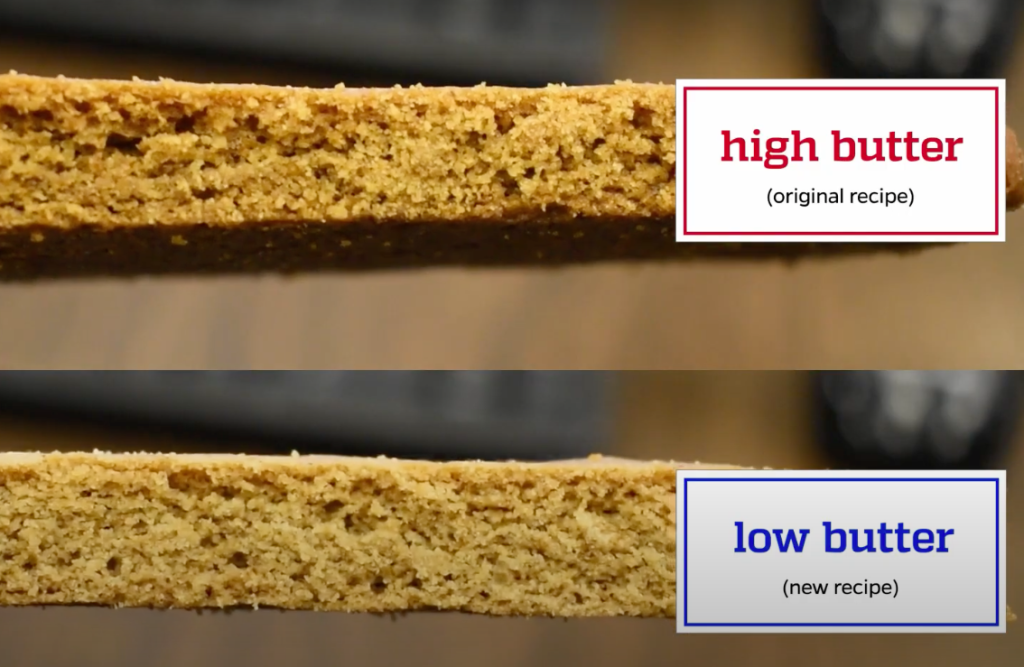Scrumptious or sturdy? Constructing a gingerbread house recipe
Holiday time means tasty sweets in many households—boozy rum balls; decorative bûche de Noël, or Yule log cake; sticky Italian struffoli; a wall or chimney from the gingerbread house your nana made. “Absolutely not!” you say—it’s like eating a brick?
There’s a good reason for that, suggests a new video from “Kitchen Matters,” a science discovery video series written and produced by graduate students in MIT’s Department of Materials Science and Engineering (DMSE): Gingerbread used for building houses needs different properties than gingerbread for eating.
The video follows Mingyu Yang as he tries to build a gingerbread house with cookies made using the recipe “The Most Delicious Gingerbread Cookies Ever.”
“But every time I try to put the roof on, the walls start bending and they break,” Yang says.
The problem, says Miranda Schwacke, is a mismatch of materials properties and performance, or how well-suited a material is for its intended function. For delicious gingerbread cookies, the targeted properties are having the proper mixture of spices and being soft and moist.
“By contrast, the intended performance of gingerbread cookies for building houses is to perform well as the walls and roof of a house, not to taste the best,” Schwacke says.
Schwacke and Yang explore how to modify the recipe to make more structurally sound cookies, hypothesizing that cutting the amount of butter will make cookies denser and thus better at supporting the house.
“Butter contains water, which can become steam at the high temperatures used for baking, creating air pockets in cookies,” Schwacke says. “This hypothesis is an example of how changing the structure can influence the properties and performance of material.”
“Kitchen Matters” launched in 2020, amid the lockdowns brought on by the covid-19 pandemic. Yang and Schwacke, along with fellow DMSE grad students Jacqueline Baidoo and Camille Farruggio, wanted to teach materials science and engineering concepts using food and familiar tools like stove burners, bowls, and wooden spoons. Episodes they’ve produced examine why certain types of gum are optimal for blowing bubbles; what makes dark, white, and milk chocolate look and taste different; and how to control the properties of caramel.

In the gingerbread video, Schwacke and Yang test out their hypothesis by making two new batches of cookies, one using the original recipe—and the original, generous amount of butter—and one with less butter. To compare properties of the cookies, they turn to Shaymus Hudson, who runs DMSE’s Laboratory for Physical Metallurgy. The lab has characterization equipment for testing materials properties. Using DMSE facilities in a video is a first for the team.
“The most important properties for making a gingerbread house would probably be strength. It needs to be able to withstand all the forces and all the loads to keep the house upright, straight. But it also needs to have some ductility,” said Hudson, referring to a material’s ability to stretch or bend. “We want the gingerbread to be slightly ductile rather than brittle.”
Hudson uses a three-point bending apparatus, which slowly applies force to a material until it breaks. The tests measure stress, force or pressure applied to a material, and strain, or how much a material stretches or deforms compared to its original shape.
Watch the video “Science of gingerbread houses” to learn the results of the tests and see the team construct a gingerbread house using the optimal building material.
“Kitchen Matters” recently said goodbye to founding member Farruggio, who graduated, but the group gained DMSE grad students Jessica Dong and Tao Cai.
“I’m super excited that they’ll carry ‘Kitchen Matters’ forward after I graduate,” says Yang, who plans to finish his studies in 2024.
In addition to making videos, the team presents at Boston-area science fairs and events such as Winter Family Day in Kendall Square, Cambridge.
Visit the “Kitchen Matters” YouTube channel to learn more.